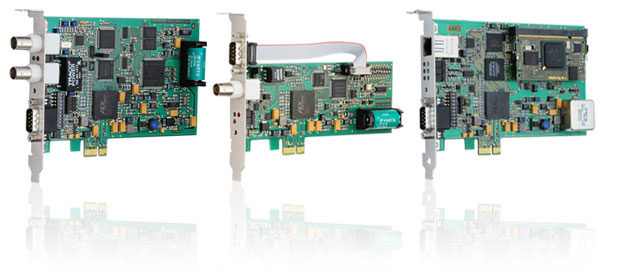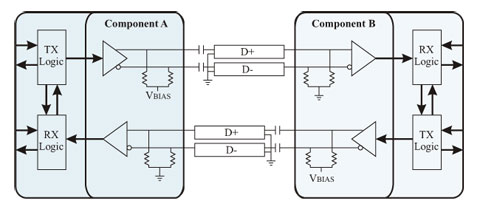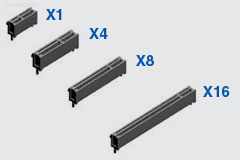PCI Express (PCIe) Slot Cards

PCI Express defines a serial point-to-point connection, the so-called Link:

The data transfer within a Link is done via Lanes, representing one wire pair for sending and one wire pair for receiving data:

This design leads to a full duplex connection clocked with 2.5 GHz capable of transfering a data volume of 250 MB/s per lane in each direction. Higher bandwith is implemented by using multiple lanes silmutaneously. A PCI Express x16 slot for example uses sixteen lanes providing a data volume of 4 GB/s. For comparison: when using conventional PCI the maximum data transfer rate is 133 MB/s, PCI-X allows 1 GB/s but only in one direction respectively. A PCIe expansion board (x1 like GPS180PEX for example) can always be used in slots with a higher lane width (x4, x8, x16):

| Interoperability | ||||
|---|---|---|---|---|
| Slot | x1 | x4 | x8 | x16 |
| Card | ||||
| x1 | Yes | Yes | Yes | Yes |
| x4 | No | Yes | Yes | Yes |
| x8 | No | No | Yes | Yes |
| x16 | No | No | No | Yes |
One of the strong points of PCI Express is the 100% software compatibility to the well known PCI bus, leading to a fast spreading.


